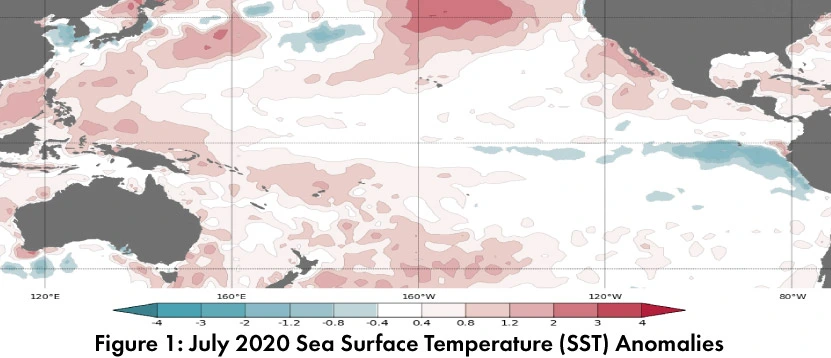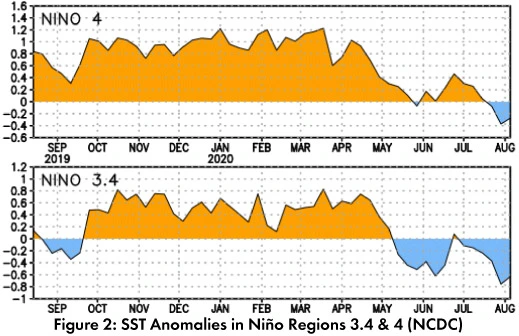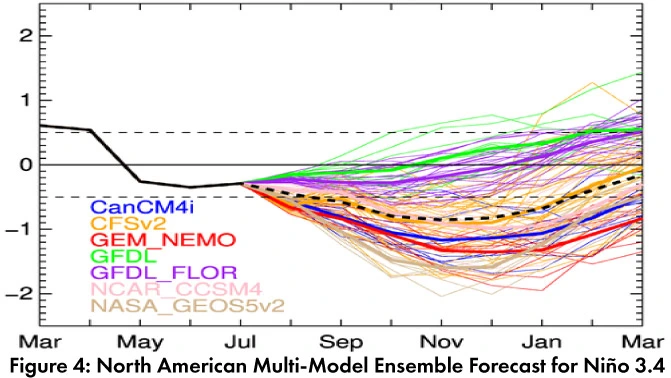Southwest Climate Outlook - El Niño Tracker - August 2020
Sea surface temperatures (SSTs) continue to cool across the equatorial Pacific (Figs. 1-2). Conditions are forecast to remain ENSO-neutral through summer 2020, while seasonal outlooks point to an increasingly likely chance of a La Niña event by fall or winter 2020.


Forecast Roundup: On Aug 4, the Australian Bureau of Meteorology maintained their La Niña watch, noting further cooling in both the observed SSTs and the models and outlooks for the rest of 2020. On Aug 11, the Japanese Meteorological Agency (JMA) maintained its call for a 60-percent chance of ENSO-neutral conditions to last through fall 2020. On Aug 13, the NOAA Climate Prediction Center (CPC) extended their La Niña Watch status. The CPC called for a 60-percent chance of ENSO-neutral during fall 2020, and a 55-percent chance of La Niña lasting till winter 2020-2021. On Aug 13, the International Research Institute (IRI) issued an ENSO Quick Look (Fig. 3), noting “SSTs in the east-central Pacific are in the cool-neutral range, and the atmospheric variables are either ENSO-neutral or leaning toward La Niña-ish conditions.” The North American Multi-Model Ensemble (NMME) remains neutral, and the mean forecast is projected to move closer and into La Niña conditions later in 2020 (dashed black line, Fig. 4).

Summary: SSTs have further cooled, but oceanic and atmospheric conditions are still generally within the range of ENSO-neutral. Most forecasts call for these conditions to last through summer. By fall, there are increasing chances of a transition to a La Niña event. There is still uncertainty and hedging included in seasonal outlooks, given the forecast of a weak-to-borderline intensity La Niña event, so there is some ‘wait and see’ as the conditions become more clear by early fall. La Niña does tend to suppress (eastern pacific) tropical storm activity in the Fall, and often leads to drier than normal conditions in winter, so we will continue to monitor ENSO this fall.
Online Resources
- Figures 1 - Australian Bureau of Meteorology - bom.gov.au/climate/enso
- Figure 2 - NOAA - Climate Prediction Center - cpc.ncep.noaa.gov
- Figure 3 - International Research Institute for Climate and Society - iri.columbia.edu
- Figure 4 - NOAA - Climate Prediction Center - cpc.ncep.noaa.gov

